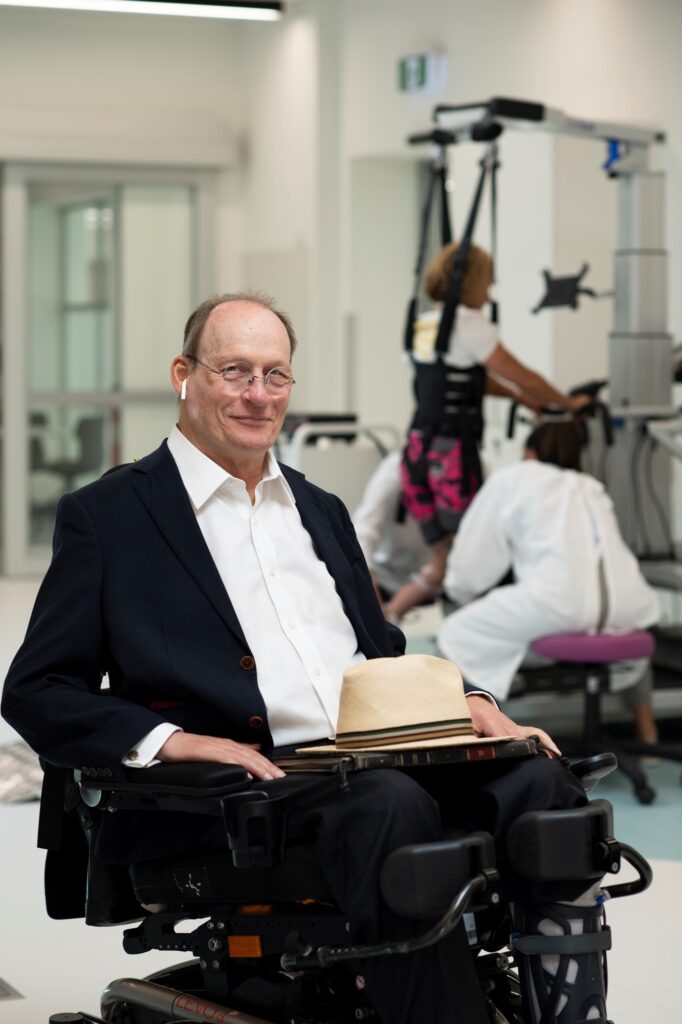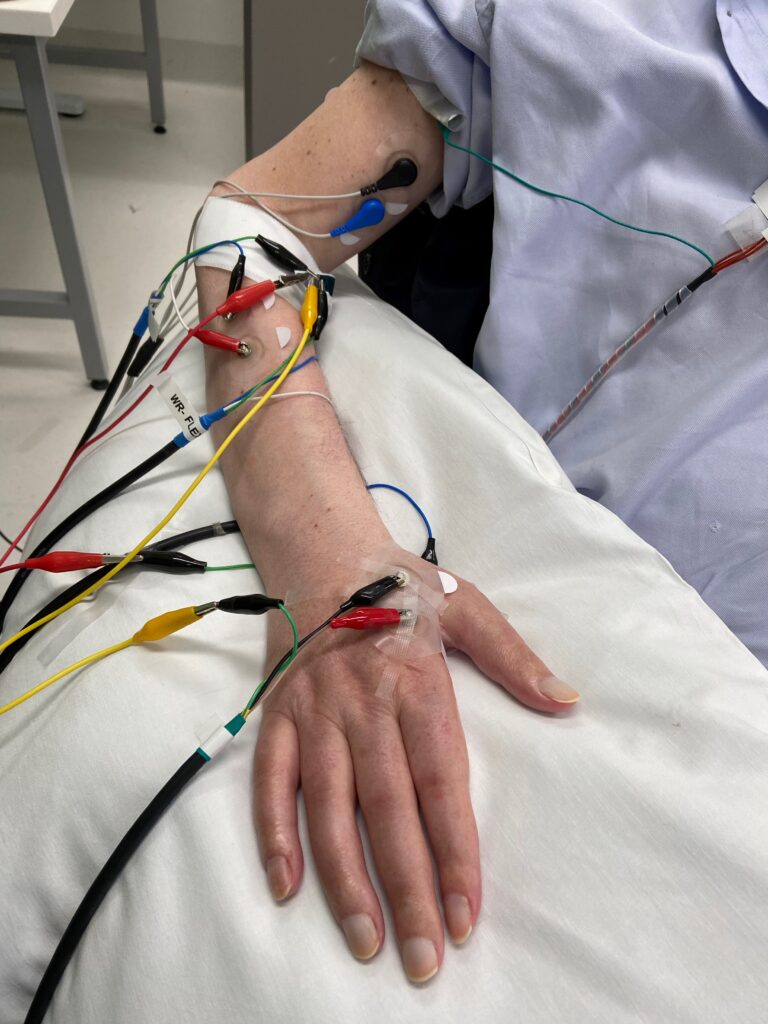A $6 million boost through the federal government’s Medical Research Future Fund will fund vital research into treatments for spinal cord injuries.
When Duncan Wallace was hit by a drunk driver 40 years ago, he was told by doctors that he would never walk again.
Now, as executive director of SpinalCure Australia, he believes no one with a spinal cord injury today needs to receive such pessimistic news.
“A person injured today should not be given such a finite prognosis,” he said. “Today there is real hope.”

Project Spark, a collaboration between SpinalCure Australia, Neuroscience Research Australia (NeuRA), Spinal Cord Injuries Australia (SCIA) and CatWallk in New Zealand, has been granted $6 million in funding from the Australian federal government’s Medical Research Future Fund.
The allocation of this funding represents the largest-ever financial commitment towards advancing research into curing spinal cord injury by the federal government.
Currently, there are no treatments available that can restore function to people with spinal cord injuries.
Kathryn Borkovic, Chief Executive Office of SpinalCure Australia, hopes Project Spark trials will change that.
“For decades, spinal cord injury patients have been without specific treatment,” Ms Borkovic said.
“With additional funding from the state and federal governments, we could see a roll-out of treatments in the near future and then start working towards the bigger picture of a cure. Spinal cord injured Australians should not have to wait any longer.”
A neurostimulation trial
The funding will be used for two world-leading clinical trials.
The first, led by Professor Jane Butler at NeuRA, will test neurostimulation’s ability to restore or improve walking in people with incomplete spinal cord injuries.
“Our research is centred on improving walking function in individuals with incomplete spinal cord injuries using neurostimulation,” said Professor Jane Butler.
“Neurostimulation involves the use of non-painful electrical stimulation to restore communication between the brain and body via the surviving pathways in the spinal cord.
“Our ultimate goal is to develop effective treatments that restore independence and improve the quality of life for people living with spinal cord injuries.”

Neurostimulation has shown positive results in small studies overseas, having restored the ability to stand and walk, improved hand control, and also returned lost vital functions such as bladder and bowel control, and alleviating orthostatic hypotension.
However, previous studies have been small with only a few participants. With the aim of recruiting 142 participants, Project Spark’s trials will be the largest and most rigorous trials of this kind in the world.
“No other experimental therapy has seen an equivalent level of meaningful return of feeling and function in trial participants,” Duncan Wallace told InSight+, “and no other has the potential to be ready for mainstream distribution in the short term”.
A neurostimulation and acute intermittent hypoxia trial
The second trial, led by Professor David Berlowitz at the University of Melbourne, will use a combination of two promising therapies — neurostimulation and acute intermittent hypoxia — with the aim of restoring arm, hand and respiratory function for people with quadriplegia.
Clinical trials have shown evidence that therapeutic acute intermittent hypoxia — one-minute alternating pulses of 9% oxygen versus room air for 30 minutes — may result in neuroplastic enhancement of the surviving connections in the damaged spinal cord (here, here and here).
This could potentially contribute to lasting improvements in function by promoting new and stronger neuronal links.
“Most injuries in Australia are contusion injuries, and the spinal cord is not completely severed, leaving some neuronal pathways undamaged,” Mr Wallace said.
“Neurostimulation and acute intermittent hypoxia both make use of this surviving tissue to restore communication between the brain and body.”
The personal and financial cost
There are more than 20 000 people in Australia with spinal cord injury.
Spinal injury costs the Australian economy $3.75 billion per annum, with a lifetime cost in 2020 estimated at $75 billion.
Loss of movement is only one part of the spinal cord injury picture, with ongoing pain, digestive health issues, pressure sores, spasm, loss of bladder and bowel control, and impaired sexual function also having significant impacts on people’s health.
Mental health challenges are also common as people face difficulties returning to work and managing ongoing health problems.
Although new research trials offer hope for the future, Mr Wallace believes there is still more that can be done to improve the quality of life for people currently living with spinal cord injuries.
“One vital improvement that is desperately needed by people with spinal cord injuries is access to GPs with spinal cord injury knowledge,” Mr Wallace told InSight+.
“A spinal cord injury affects every bodily function and symptoms can be misleading and unique to the spinal cord injured.
“Too often the patient is left trying to explain the ramifications of their injury to their GP who lacks the specialised knowledge to adequately diagnose and treat their issues.”
With generous grants and world-leading research, the Project Spark team hopes to not only restore meaningful levels of function in people with spinal cord injuries, but to move us closer to a cure.
“Emerging treatments are already returning life-changing function to research volunteers, including, for some, the ability to stand and take steps,” Mr Wallace said.
“With proper funding for further research, someone injured today should not have to spend a lifetime in a wheelchair.”
More information about clinical trials
The trials will begin later in the year. People who are interested in participating are encouraged to email research@spinalcure.org.au and visit www.spinalcure.org.au/research/sci-clinical-trials-australia
Subscribe to the free InSight+ weekly newsletter here. It is available to all readers, not just registered medical practitioners.

 more_vert
more_vert
Looking for innovative ways to stimulate the spinal cord to allow a quad or paraplegic person to stand up and take uncoordinated steps is inspiring and admirable. Walking is the holy grail for non walking sci victims. However wouldn’t it be more strategic to aim at easier and more realistic targets like bowel/bladder and sex functions. Maybe the lure of funding for enabling paralysed people to walk has blindsided our researchers into going down a cure path that maybe will not eventuate. Strategically it is better to gain small wins up front and then after accumulating substantial knowledge, pursue the holy grail of walking unaided.
Just a thought.
We’re patiently waiting for a light at the end of this dark tunnel. Scientists grew an ear on the back of a lab rat when they should’ve been working on spinal cord injury cures!!
Very good news. Congratulations and good luck from Iceland http://www.isci.is